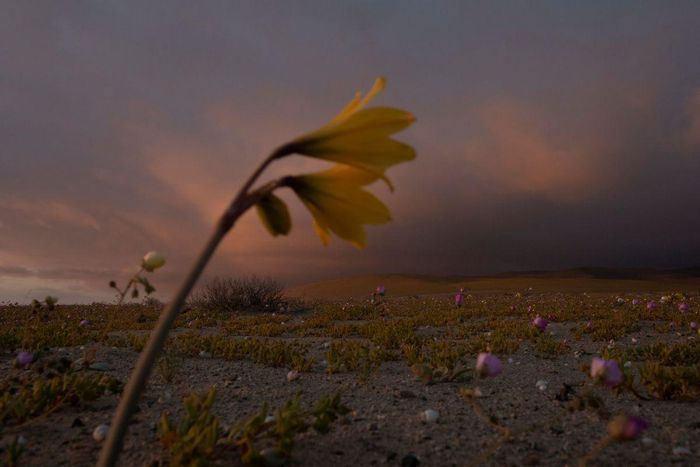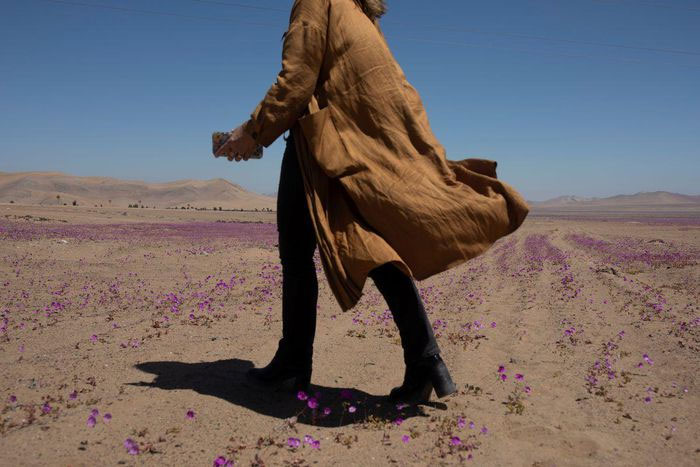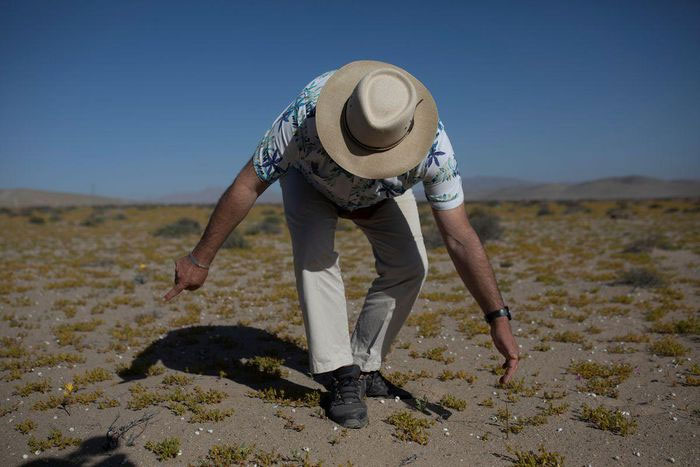Flowers bloom in the driest desert on the planet
In recent weeks, the sand dunes of Atacama, Chile, the world's driest desert, have once again been bathed in vibrant colors as flowers bloom, despite a persistent drought.
The dramatic scenery of the flower desert attracts domestic and foreign tourists every spring in the Southern Hemisphere. Flowers bloom more or less depending on the amount of rain in winter.

Flowers bloom in spring in the driest desert in the world near Copiapo, Chile, October 14. (Photo: Reuters).
Biologist Andrea Loaiza said: 'This is a 'natural laboratory', as it allows scientists to observe how changes in rainfall affect plant diversity. .

A woman walks in the flowering area of the Atacama Desert. (Photo: Reuters).
Desert blooms (Spanish desierto florido) are thanks to tolerant seeds and bulbs that can survive the extremely dry weather of the Atacama until flowering in spring.
Botanist Gina Arancio, of the Universidad de La Serena, said that seeds and tubers collectively known as sprouts in the Chilean desert can survive for years even without rain.

Biologist Francisco Squeo points to a yellow Ananuca flower, a flower endemic to the Atacama Desert. (Photo: Reuters).
This year, the area is officially under strict protection because of the deterioration caused by vehicles. The threat of trade in plants is also present. Therefore, people are only allowed to enter the designated areas.
Biologist Cesar Pizarro said the desert is receiving less and less rainfall over time, with the exception of 2007 and 2011.

View of the Atacama desert covered with flowers. (Photo: Reuters).
He said: "Although rain is limited to a small area, but still very impressive to witness this in the most arid desert planet '.
And with less and less rain, scientists are also coming here to study to understand the impact of climate change on local plant species, as well as the ability of plants to survive and adapt. in a drier environment.
- The world's most arid desert turns into a colorful sea of flowers
- Arid desert 'risen' covered with roses
- In the driest desert in the world, there is a giant hand that is calling for help.
- Life is in the driest place on Earth
- Detect tremors: Flowers bloom on Mars?
- North-west flower flowers dyed purple sky of West Lake
- The way the flowers know it is time to hatch
- Discovering life in the world's most Martian-like place
- Listed 7 species of 'most smelly' flowers in the world
- How to make peach blossom bloom right Tet
- Discover the festival of death flowers in Japan
- The most exotic deserts in the world
 Why do potatoes have eyes?
Why do potatoes have eyes? 'Tragedy' the world's largest carnivorous life: Death becomes ... public toilet
'Tragedy' the world's largest carnivorous life: Death becomes ... public toilet Tomatoes were once considered 'poisonous' for 200 years
Tomatoes were once considered 'poisonous' for 200 years Detecting microscopic parasites on human face
Detecting microscopic parasites on human face